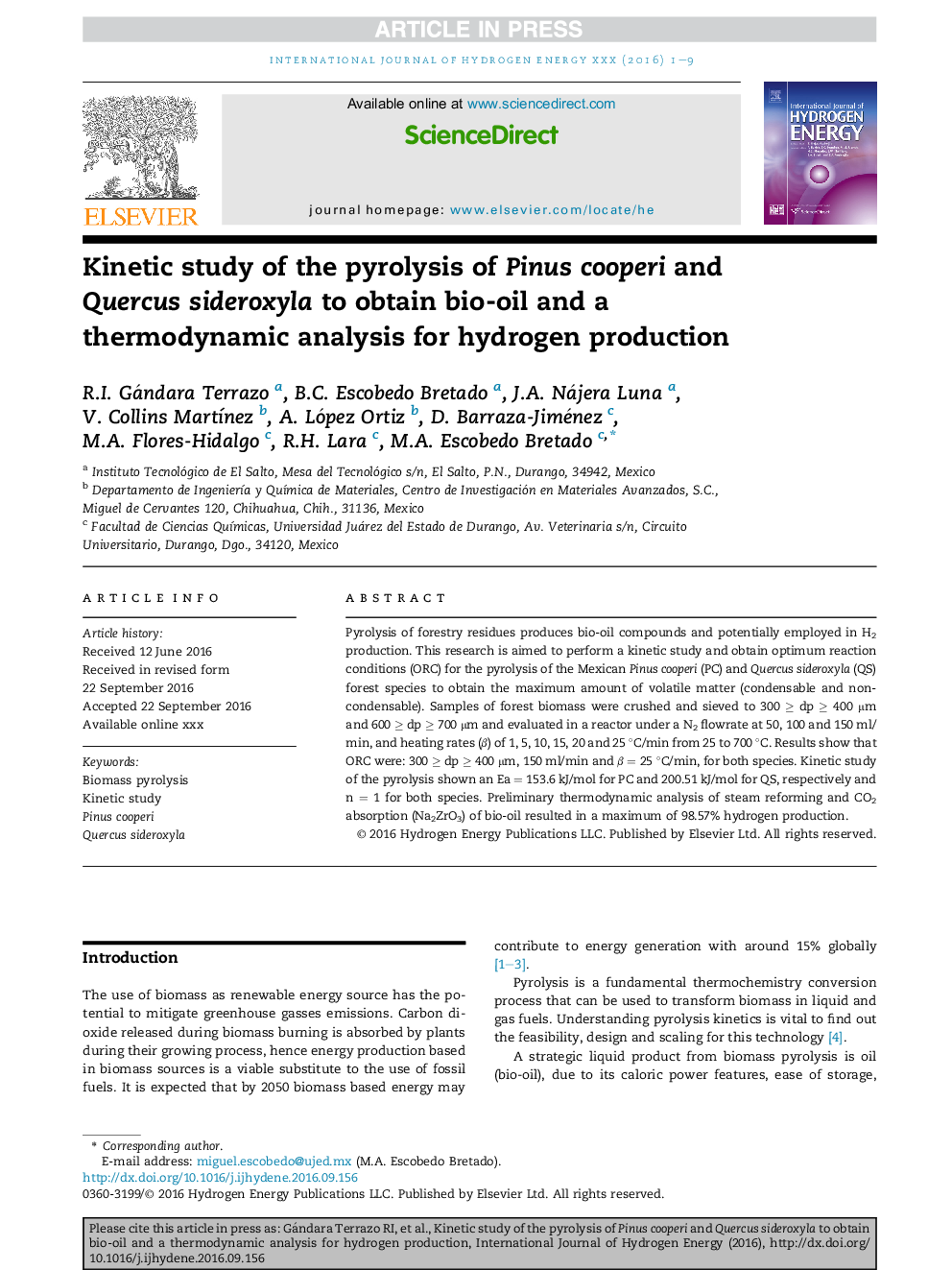| Article ID | Journal | Published Year | Pages | File Type |
|---|---|---|---|---|
| 5145849 | International Journal of Hydrogen Energy | 2016 | 9 Pages |
Abstract
Pyrolysis of forestry residues produces bio-oil compounds and potentially employed in H2 production. This research is aimed to perform a kinetic study and obtain optimum reaction conditions (ORC) for the pyrolysis of the Mexican Pinus cooperi (PC) and Quercus sideroxyla (QS) forest species to obtain the maximum amount of volatile matter (condensable and non-condensable). Samples of forest biomass were crushed and sieved to 300 â¥Â dp â¥Â 400 μm and 600 â¥Â dp â¥Â 700 μm and evaluated in a reactor under a N2 flowrate at 50, 100 and 150 ml/min, and heating rates (β) of 1, 5, 10, 15, 20 and 25 °C/min from 25 to 700 °C. Results show that ORC were: 300 â¥Â dp â¥Â 400 μm, 150 ml/min and β = 25 °C/min, for both species. Kinetic study of the pyrolysis shown an Ea = 153.6 kJ/mol for PC and 200.51 kJ/mol for QS, respectively and n = 1 for both species. Preliminary thermodynamic analysis of steam reforming and CO2 absorption (Na2ZrO3) of bio-oil resulted in a maximum of 98.57% hydrogen production.
Keywords
Related Topics
Physical Sciences and Engineering
Chemistry
Electrochemistry
Authors
R.I. Gándara Terrazo, B.C. Escobedo Bretado, J.A. Nájera Luna, V. Collins MartÃnez, A. López Ortiz, D. Barraza-Jiménez, M.A. Flores-Hidalgo, R.H. Lara, M.A. Escobedo Bretado,
